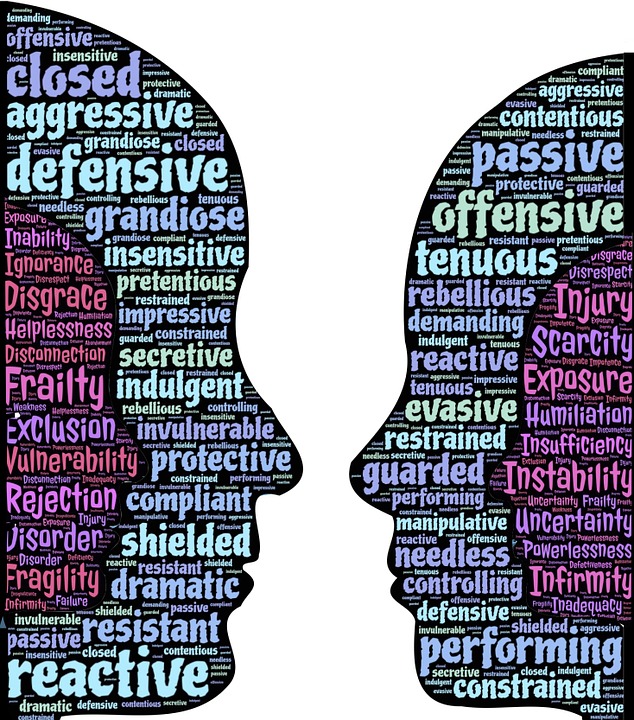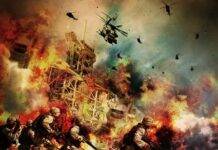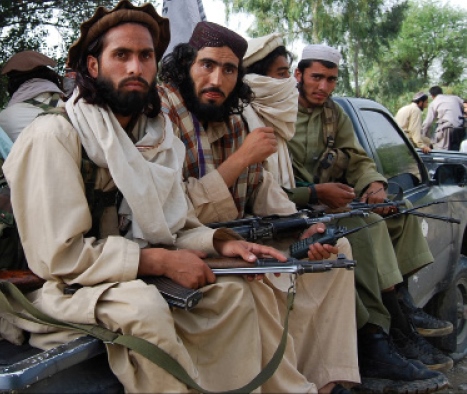
This is Part 2 of the two-part long article. The first part has already been published.
S4: Claiming destruction of places of worship as a non-Islamic tradition in Indian history
To my mind this is the most obnoxious of all the four strategies. Eaton states “Therefore, when Indo-Muslim commanders or rulers looted the consecrated images of defeated opponents and carried them off to their own capitals as war trophies, they were in a sense conforming to customary rules of Indian politics.” This is the kind of historians we respect! Does this also explain the Islamic practice of destroying others’ places of worship from Kaba to Hagia Sofia to the Mosque of Job? But we can leave that aside and concentrate on the Indian temples.
On what evidence does Eaton make such a claim? Eaton gives a long list of temple desecrations and carrying off with them the images of the deity by the victorious kings, as a symbol of the deity leaving the defeated king. However, there is a difference – the Hindu kings, almost always, either consecrated or placed the idols with respect in their own temples, as a sign of the deity now favoring the victorious king. This is actually an implementation of Eaton’s above-mentioned theory that the deity is the real sovereign and the king’s sovereignty is just a reflection of the deity. But this does not involve insult to the deity, to Hindus and to Hindu faith. Nor does it involve gloating over the fact that the infidelity is destroyed. Nor trampling of the idols under foot. Eaton’s own accepted fact that the Muslim kings invariably destroyed the idols, insulted them by placing under the steps of mosques, and the Hindu kings though looted the idols but consecrated or placed with respect in their own temples, gives a lie to his explanation. The motive in one is deliberate insult to the people and their religion, in the other is it a political act of declaring that the protection of the deity is not enjoyed by the new victorious king, without insulting either the deity or the people’s faith.
But Eaton also gives at the least one example of destruction of an image of a deity by Hindu troops. The example is of the destruction of an image ‘supposed to be’ of “Vishnu Vaikuntha, the state-deity of Lalitaditya’s kingdom in Kashmir” by “Bengali troops”. Eaton gives no clear reference, but since all his list seems to be based on Richard Davis, it is reasonable to assume that this example of image destruction is also based on the same source. Davis gives the story based on Kalhan’s Rajataringiti. It is an interesting story. The part of the story concerned with my argument goes as follows: “Once, after making a promise of safe conduct to the king of Gauda (Bengal), and offering as surety (madhyastha, literally, “intermediary”) on his pledge the image of Visnu Parihasakesava, Lalitaditya treacherously ordered the ruler assassinated. Such a brazen act clearly departed from all standards of proper royal conduct, and called for revenge. As we might expect by now, the reprisal was directed not at the perpetrator of the deed but at its intermediary. A troop of the murdered king’s dedicated attendants snuck into Kashmir, posing as pilgrims…”. Here the deity was pledged as surety and intermediary, and the king who worshiped that deity acted treacherously. And it was an act of specific revenge. Also, it was an act of the loyal troops of the assassinated king. All other looting of images is to respectfully reinstate them in temples in the capital cities of the victorious kings. They all were motivated by politics, and it was the kingdom under attack, not the religion or deity. In destruction of temples by Muslim rulers it was also the religion of infidels and their idols, as shown by the two quotes above. A historian who does not understand this difference is not worth his/her salt. And a historian who understands this but hides the fact and makes false parallels is not honest, and is playing mischief.
Another hole in Eaton’s thesis is the number of temples destroyed. The quote about Khandela, a small village in Sikar district in Rajasthan, shows destruction of all the temples in the neighborhood. All the temples in the neighborhood were unlikely to be politically significant. The Khandela Rajputs themselves were small fry who could muster only 300 villagers to defend their temples – they were no sovereigns. This attack seems to have happened in Bahadur Singh’s reign, who was dropped even from the list of mansabdars. Their legitimacy actually depended on the emperor’s own recognition. This was clearly an act of vengeance taken out on their religion for the maximum hurt psychologically.
Another part of this thesis is that the Hindu kings (the one mentioned the most often is Pushyamitra Shung), also destroyed Buddhist and Jain temples. In a recent article, Prof. Yogendra Yadav claims, “There are umpteen examples of the destruction of Hindu temples by Hindu invaders and of Jain temples and Buddhist viharas by Hindu kings.” This is said too often. But no one gives a list and primary sources to prove the claim – one is supposed to take the claim as true on face value. The only name that surfaces again and again is Pushyamitra Shung, on the authority of Ashokavdana. It is worth quoting at length from Professor Romila Thapar on this issue.
“The idea of Puṣyamitra being violently anti-Buddhist has often been stated, but archaeological evidence suggests the contrary. Buddhist literature relates that Puṣyamitra wishing to gain notoriety decided that even a wicked action could be excused provided it made him well known. When questioning people as to why Aśoka gained fame, he was told that it was due to Aśoka having built 84,000 stūpas for Buddhism. Whereupon Puṣyamitra decided that he would gain fame by destroying these 84,000 stūpas. Yet, an archaeological study of the stūpa at Sanchi proves that it was enlarged and encased in its present covering during the Suṅga period. The Aśokan pillar near it appears to have been wilfully destroyed, but this event may have occurred at a much later date. It is more than likely that the Aśokāvadāna legend is a Buddhist version of Puṣyamitra’s attack on the Mauryas, and reflects the fact that, with the declining influence of Buddhism at the imperial court, Buddhist monuments and institutions would naturally receive less royal attention. Moreover the source itself in this instance being Buddhist, it would naturally exaggerate the wickedness of anti-Buddhists.”
Thus, this claim can hardly be supported on the basis of this source. In addition, there are many more historians who think this claim is false. Also, Ashokavadana repeats similar stories for Ashoka and Pushyamitra regarding killing of Ajivikas in the case of Ashoka and Buddhists in the case of Pushyamitra. The format of the stories, offering a dinar for a head of the Ajivika (Ashoka) and Buddhist (Shunga) etc. is identical. This is highly unlikely.
If the analysis above is of any worth, then these four strategies may be good enough for obfuscation and browbeating the gullible, but hardly epistemically worthwhile historiography tools. But our historians never tire of using them and are still throwing such challenges to others. This is all the more true particularly of their ‘chelas’ who bring up these strategies whenever one talks about Muslim rulers’ destruction of Hindu and Jain temples.
Tan ka ghaav to bhar jaye, par man ka naa bhare
These are the people who have kept this man ka ghav festering for the last seventy five years. As I said above, this intellectual browbeating and obfuscation becomes a standard intellectual example of ‘zabra mare bhi, aur rone bhi naa de’, because if you mention these atrocities as a Hindu you are immediately dubbed as communal, immediately labeled rather than attempting to understand the substantive part of the argument, and finding a solution.
But can there be a solution? I believe yes, there can be. And I don’t think that the solution is reclaiming the mosques as temples. It seems to me that mosques should remain mosques. Prof. Yadav says a similar thing, but his reasons for preferring to arrive at an agreement are to my mind wrong and outright insulting. Before I come to my reasons for the same, I first would like to comment on Prof. Yadav’s flimsy and insulting reasons.
In the above-mentioned article in The Print he accepts that temples were destroyed for religious reasons by Muslim rulers, and that historical wrongs should be addressed but thinks that the case for the restoration of temples should further meet four conditions. He writes that it would make a good case for restoration “provided four additional conditions are met. One, this is the only major historical wrong that we need to address today. Two, there is a clear identifiable successor or inheritor of the victim and the perpetrator present before us. Three, the harm caused by the historical wrong continues to put the ‘victim’ community at a disadvantage, and four, the proposed action — restoration of temples in this instance — would redress historically inherited injustice and help society bring closure to that memory.” And then comes to the conclusion that “The case for temple restoration fails all these four tests.”
I believe he is wrong in all four cases. He dismisses the first by saying that: 1. “There are umpteen examples of the destruction of Hindu temples by Hindu invaders and of Jain temples and Buddhist viharas by Hindu kings”. This is an unproven claim. There is no case of as clear evidence as we have in the case of hundreds of Hindu temples destroyed by Muslim kings. As argued above, this is nothing but whataboutry. 2. “Besides, a number of mosques were demolished during Partition in India, just as temples were demolished across the border.” These are two very different cases, one was destruction of temples by a political power, the other in a situation of riots. The mosques destroyed or turned into temples were mostly abandoned ones.
His reason for dismissal of the second condition is summarised in the tag line of the article “By what logic do we see Muslims of today as the Mughals’ descendants?” I cannot resist the temptation of some rhetorical fun on this: “Well, we do not see the Muslims of today as Mughals’ or other Muslim rulers’ descendants. But then Prof. Yadav, by what logic do the Muslims of today claim ownership of Gyanvapi Mosque and umpteen other mosques which are built on the destroyed temples?” But more seriously, Prof. Yadav himself accused the present day BJP and RSS people of what he considered lapses on the part of RSS in the 1930s and 40s in one of his videos. Regarding the nationalism of BJP and RSS he says “राष्ट्रवाद में तो इनका, एक कतरा खून भी इन लोगों ने कभी नहीं दिया। अंग्रेजों की दलाली इनमें से कई लोगों जो इनके वारिस हैं, उनमें से कई लोगों ने की.” (To nationalism they did not contribute even a single drop of blood. Many people whose inheritance they carry were touts/brokers of the Britishers.) By what logic Prof. Yadav accuses the present-day BJP-RSS people for imagined or real treachery of the RSS people in 1940s? Are they biological descendants of those people? Well, we do understand that the communities of ideological and religious lineage are not formed on a biological basis but by adherence to institutions, ideas and principles. The communities of the present day Hindus and Muslims are also formed in the same way. If the Hindus of today feel that the destruction of temples was a civilisational attack on them, and have proof of the economic, psychological and cultural damage, then they have to be listened to. If the Muslims inherit the ownership to these converted Mosques, which are symbols of bigotry, and are hurt even by the idea of parting with them in the face of clear evidence; then, well, even if it hurts, they are also condoning the barbarity and bigotry. You cannot enjoy the fruits of barbarity and bigotry and at the same time claim to be completely distanced from it.
The third condition he dismisses with a cavalier attitude saying “Third, it would stretch credulity to claim that the destruction of temples placed the entire Hindu community in a relationship of enduring disadvantage vis-à-vis the whole Muslim community, a disadvantage that persists even after some 500 years.” Why is it necessary for the entire Hindu community to be disadvantaged with respect to the whole Muslim community? Is the disadvantage only economic and political? As I have argued above, how do you calculate the psychological damage to a civilisation due to a festering wound? What about every Hindu visitor, if s/he is a religious one, to Qutub complex seeing pillars of a Hindu temple supporting the dome of a Mosque deliberately named “Might of Islam”? That become hoodwinking when the wrongdoing is not even accepted.

The path to settlement
First, I would like to quote Dr. Ambedkar on the difference between ‘settlement’ and ‘appeasement’. “It seems to me that the Congress has failed to realize two things. The first thing which the Congress has failed to realize is that there is a difference between appeasement and settlement, and that the difference is an essential one. Appeasement means buying off the aggressor by conniving at his acts of murder, rape, arson and loot against innocent persons who happen for the moment to be the victims of his displeasure. On the other hand, settlement means laying down the bounds which neither party to it can transgress. Appeasement sets no limits to the demands and aspirations of the aggressor. Settlement does. The second thing the Congress has failed to realize is that the policy of concession has increased Muslim aggressiveness, and what is worse, Muslims interpret these concessions as a sign of defeatism on the part of the Hindus and the absence of the will to resist.”
The quote is from an era when riots were rife and Muslim crowds were two steps ahead of Hindus in “murder, rape, arson and loot”. When reading it today we have to leave these words out and focus on “On the other hand, settlement means laying down the bounds which neither party to it can transgress. Appeasement sets no limits to the demands and aspirations of the aggressor. Settlement does.” Today, Hindus and Muslims perhaps both want appeasement. Thus, we need a settlement which sets “limits to the demands and aspirations”.
Therefore, the first step for me is to appeal to Hindus to decide clearly on their demands and aspirations in this regard. I am focusing on the Temple-Mosque issues alone. I do not think Hindus should demand restoration of destroyed and converted temples. My reasons are entirely different from Prof. Yadav’s reasons. And many would disagree with me on this count – the liberals will call me biased, if not outright a Hindu fundamentalist. But I will go ahead in listing them.
My fundamental principles and guide in this thinking:
- I believe that the Hindus are smarting more under the psychological pain of the denial of recognition of the attack on their religion and civilization, through destruction of temples and converting them into mosques. Their pain of actual physical destruction and loss is a lesser pain compared to this psychological hurt.
- I believe that the paramount concern is a democracy with equal rights to all citizens which cherishes diversity. This obviously implies peaceful cooperative living together of all religious and other communities.
The second above is the aim to my mind. But one cannot properly achieve this aim without first addressing and resolving this issue and healing the psychological part of the Hindu hurt. Therefore, this healing becomes a necessary first step. I am aware that there are other pains in society – for example, the treatment of Dalits within the Hindu fold, aggressive conversion drive by Christians, and so on. But as I said, this particular article is focused only on one issue.
Keeping these two principles in mind I don’t think it would be good for democracy and peaceful cooperation between communities if Hindus insist on restoration of their lost temples. And here in my mind the fear is not that Muslims will resent and will continue the animosity. That is there, but the real issue in my mind is different. I consider the conversion and destruction of temples a barbaric and religiously bigoted act. Whatever the historians and pleaders for understanding those bigots in their own times and within their own culture may say, in today’s terms they were barbaric and bigoted. They lived in times and with a particular mindset where tolerance of the other as an equal was difficult. I have said above that the Muslim community today, by clinging to these converted mosques, simultaneously also approved of the bigotry of those kings. Similarly, if the Hindus take back these temples (it may not even be possible for all) against the wishes of Muslims, they will become bigoted and intolerant of the other. In spite of every one vilifying the majority community the world over, I believe democracy, civil liberties and secularism are sustained by the majority community, that is Hindus, in this country. If they become bigoted and intolerant—which seems to be the direction they are moving in today – this country cannot remain a secular democracy guaranteeing civil liberties and equal right to all. That is why Hindus have to restrain themselves willingly and with understanding. Once this much is settled, I would propose the following.
- The ownership of the mosques should remain as it is today. No handing over, or changing the character of the places of worship. We are no more barbarians even if some are pushing us to be.
- The Muslim community, and particularly the Islamists, have to learn not to throw these acts of bigotry in the face of their Hindu compatriots as heroic acts and stop taking pride in them. And in those who committed them.
- All such mosques should always remain under the supervision of the Archaeological Survey of India. Their ownership should remain with the Muslim community as it is today, but they should not be able to change these structures in a manner that the evidence of their history gets destroyed. Therefore, every change, addition, renovation, restoration should happen strictly in the supervision of ASI and with its clear written approval with maps and all.
- Every such property (mosques, idgahs etc.) should have a board prominently displayed in front of each gate of its premises giving a brief but clear history of the place. Who built the original structure, when, who changed/destroyed, when, in whose ownership it is today, et al.
- This should be done once and then the chapter closed.
A simpler way could be that once the historically ascertained facts about prominent temples and mosques are established and agreed upon, the leaders of both communities should sit together and come to an agreement that some of them which are considered of crucial importance may be peacefully handed over to the Hindus. But that kind of magnanimity does not seem to be possible in Islamic thought, as far as I understand it; even if many individual Muslims want such a solution, it perhaps will never materialize.
A rhetorical whataboutery is often raised whenever one talks about destruction of temples by Muslim kings: what about the Buddhist monasteries and stupas destroyed by Hindu kings? Well, if (1) we have sufficient evidence of particular monasteries and stupas which are in the possession of Hindus today, and (2) if there are Buddhist claimants to them, then (3) the Hindus should voluntarily and peacefully hand them over to Buddhists. If the Hindus are adamant and do not agree, then the same treatment should be meted out to them as well so far as the question of handing over mosques to them is concerned.
References
3. Richard Eaton, Temple Desecration and Indo-Muslim States Part 2, Frontline, January 5, 2001. Page 76. 4.Davis, Richard H., Lives of Indian images, Princeton University Press, 1997, page 83.
5.Agarwal, B. D., Rajasthan District Gazetteers: Sikar, Directorate of District Gazetteers, Government of Rajasthan, Jaipir. 1978. Page 27.
6. https://theprint.in/opinion/heres-the-case-for-restoration-of-desecrated-hindu-temples-and-why-it-loses-the-debate/971596/
7. Romila Thapar, Ashoka and the decline of Mauryas, OUP, 1961, page 200
8.Dr. Babasaheb Ambedkar WRITINGS AND SPEECHES VOL. 8, Ed Vasant Moon, Pub. Dr. Ambedkar Foundation, New Delhi. Page 270.
Rohit Dhankar is Professor, School of Education, Azim Premji University, Bangalore. He is also the Secretary, Digantar, Jaipur.
The ideas expressed here are solely those of the author and do not represent those of any organisation that he is affiliated with.
The views and opinions articulated here are solely that of the author and are not endorsed by the The New Leam.










